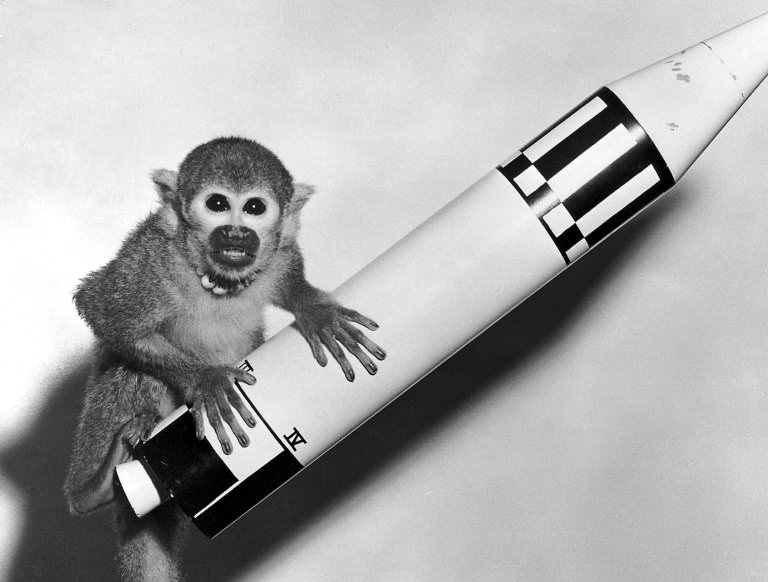Monkeys have made contributions to spaceflight before, and NASA plans to start using them again to test the effects of radiation exposure on their performance of various tasks. With renewed efforts to send humans to the Moon and Mars – which exposes them to radiation from the Sun and galactic cosmic rays – NASA wants a better idea of exactly what the effects of this radiation will be on the cognitive performance of astronauts. A research proposal on the effects of radiation in primates is just one of twelve studies that NASA has chosen to fund through its Human Research Program grants for space radiobiology research.
The study, proposed by Jack Bergman, who is an Associate Professor of Psychobiology at Harvard Medical School’s McLean Hospital in Belmont, Massachusetts, will test how the exposure to radiation of 18-28 rhesus monkeys will effect their performance at trained tasks. They will be subjected to a single dose of radiation that is equivalent to what an astronaut would encounter on a three-year mission to Mars. After the exposure, the monkeys will be monitored as to how they perform tasks which they have been trained to do on a computer touch screen.
“The beauty of this is that we can assess at different time points after exposure, so not only do we get a sense of rather immediate effects, but then we can look again at longer time points. That kind of information just hasn’t been available,” Bergman told Discovery News.
The aim of such research is to see exactly how radiation exposure will alter the performance of astronauts on a long-term mission to Mars. Radiation exposure has been shown in mice and rats to effect their overall cognitive performance, but little is known as to what effects will occur in humans at such radiation levels. This is why the study will be done on primates, which are much closer in biological makeup to humans.
The monkeys will not be killed after the experiment ends, and will remain at the McLean hospital for care during the remainder of their lives.
NASA has enlisted rhesus monkeys before, in the 1940s into the 1960s, to study the effects of launch and re-entry into space. A number of rhesus and squirrel monkeys were launched into space, and many did not survive the re-entry. These experiments paved the way for human spaceflight, and gave NASA information as to what was needed to protect the astronauts from the inherent danger of going into space.
The decision by NASA to fund this experiment has of course raised concerns about the ethical nature of such experiments. The Physicians Committee for Responsible Medicine sent an appeal to NASA administrator Charles Bolden, charging that the experiments are in violation of the Sundowner Report, guidelines set by NASA regarding the ethical treatment of animals used in research.
When the experiments are to begin is still unclear, as the research proposal is still pending approval by the Brookhaven National Laboratory in Upton, New York, where the actual irradiation research will take place.
Source: Discovery News, New Scientist

